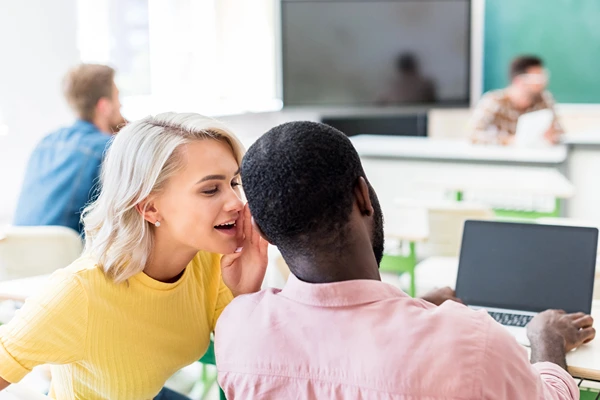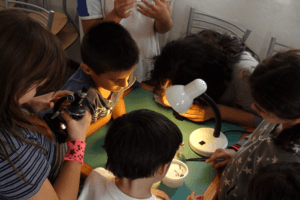Your Comprehensive Guide to Digital Music Distribution
Are you a singer, musician, or in a band and you record your music? The digital distribution of music has become essential for artists seeking to promote their songs and albums to music fans. While physical albums and CD’s are still sold in stores and online, the music industry mainly operates in a digital world. So, how to you get your music out to grow your fan base?
The solution is enlisting the services of a digital music distribution platform. However, this can be a daunting task, especially for artists who are just starting out. As we all know from our own experience listening to music, music lovers can easily listen to their favorite singers and bands through an app on their phone. Thousands of songs are accessible at our finger tips, enabling is all to discovering a myriad of new artists.
Streaming services have created opportunities for independent artists to distribute their music worldwide. It increases the reach of established artists as well. In this article, we’ll take a closer look at digital music distribution. Basically, it’s how you can get your music uploaded for people enjoy and follow. We’ll explore the benefits, the various platforms, and provide steps on how a singer or musician can get started.
What Is Digital Music Distribution?
Digital music distribution is the process of making music available to music listeners online. It involves uploading music to online streaming platforms like Spotify, Apple Music, and Amazon Music. It can be accessed by music fans worldwide. Digital distribution provides several benefits to artists, including the ability to reach a global audience, having more control over the distribution process, and access to detailed analytics and metrics.
Benefits of Digital Music Distribution
In the ever-evolving music industry, digital music distribution has emerged as a powerful tool for artists, granting them unparalleled access to data and analytics, along with increased control over their creative process. By harnessing these benefits, musicians can make more informed decisions, optimize their promotional strategies, and ultimately achieve greater success in the digital landscape.
Compared to the time before streaming platforms, one of the biggest benefits is the reduced cost. We’ll elaborate on this benefit in our next point.
Global Distribution
Thanks to the digital world we live in, it’s much easier for artists to send their music out into the universe without having to create records or CD’s and ship them to physical stores. Digital music distribution makes makes it possible for independent artists to distribute music with the backing of a record company contract. With older physical distribution methods like vinyl records and CDs, artists had limited reach.
More Control
Digital music distribution provides artists with more control over the entire distribution process, as opposed to being at the mercy of manufacturers, shipping companies or some faraway executive. In addition to logistical details, artists can choose which platforms to distribute their music on and still retain creative rights. This control allows artists to make informed decisions about how their music is marketed.
Analytics and Metrics
Digital music distribution platforms provide detailed analytics and metrics that can help artists track the performance of their music. This information includes the number of streams, downloads, and revenue generated. It allows artists to make educated decisions about future releases and adjust marketing strategies as needed. It eliminates guesswork and makes the entire process less complicated.
Digital Music Distribution Platforms

There are several digital music distribution platforms out there for artists, each with unique features and benefits. This is not to be confused with the streaming services that deliver the music to listeners, such as YouTube Music and less mainstream services like Qobuz and Tidal. Distribution platforms are the ways an artist gets their music uploaded to these streaming services.
Here are some of the more popular platforms available. A few of these distributors can also send music out into the world “old school”, by CD’s to stores.
DistroKid
DistroKid is a leading digital music distribution platform that allows artists to distribute their music to more than 150 music stores and streaming services worldwide. The platform offers unlimited uploads and charges an annual fee of $19.99 per artist, as opposed to charging per release.
TuneCore
TuneCore is another similar digital music distribution platform. The platform charges a fee per release. That being said, it does allow artists to retain 100% of the revenue earned from downloads and streaming.
CD Baby
CD Baby is another platform entirely for independent artists. They claim to be “anti-label” by its parent company’s COO, Tracy Maddux. CD Baby retains 9% of reproduction royalties and charges a one-time fee per release with no annual fees.
RouteNote
RouteNote allows artists to distribute their music to over 50 music stores and streaming services worldwide. The platform offers a free option, with artists retaining 85% of their royalties, and a premium option, where artists pay $9.99 per release but keep 100% of their royalties.
AWAL
AWAL is a larger digital music distribution platform with access to over 200 music stores and streaming services worldwide. The platform offers a range of features, including marketing and promotion tools. They charge artists a percentage of their royalties.
Getting Started with Digital Music Distribution
Choose a Distribution Platform
The first step in starting digital music distribution is choosing a distribution platform. Consider factors such as cost, marketing, and analytical features. You’ll also want to check the number of platforms you’ll have access to as an artist.
Prepare Your Music
Before uploading your music to a distribution platform, make sure it is properly formatted and labeled. Ensure your metadata is accurate. This includes the song title, artist name, and album title, is accurate and complete.
Upload Your Music
After uploading your music to your distribution platform of choice, the distribution process will begin. The platform you choose will distribute your music to the streaming mediums and stores you selected during the upload process. It can take anywhere from a few days to a few weeks for your music to be available on all your desired platforms.
Once your music is available, you can begin promoting it to your audience and track its performance. You can do this by using the analytics and metrics tools provided by the distribution platform. It’s important to continue promoting your music and engaging with your audience to increase reach, performance, and profits. But at this point, you can enjoy the fruits of your labor and begin collecting royalties from the platforms where your music was streamed or downloaded.
Teachers: Explore 7 ways to make music class interesting for kids









